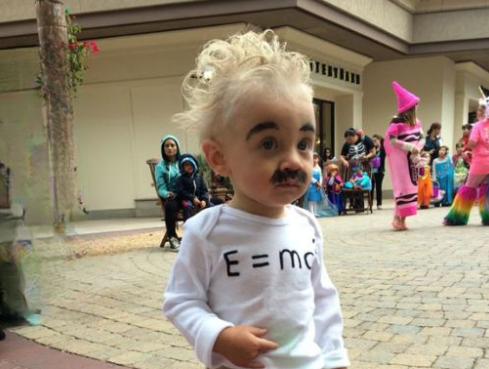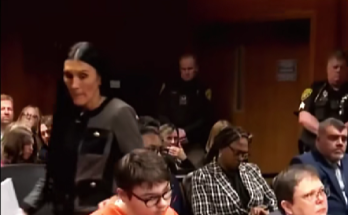Life is full of moments that remind us just how remarkable children can be. Sometimes these moments happen during big milestones, but often, they reveal themselves in the most ordinary situations. For me, one such moment happened during a simple school event. The theme seemed straightforward: “Iconic Characters.” Most parents, myself included, assumed this would be a parade of superheroes, princesses, and cartoon mascots. I was ready to help my son slip into a Spider-Man suit or maybe a Batman cape.
But my child had a very different vision—one that left me both surprised and deeply inspired.
The Unexpected Choice
One morning, as my son sat at the breakfast table spooning cereal into his mouth, I casually asked him which iconic character he wanted to be for the big day. I expected him to blurt out the name of a superhero. Instead, he paused, locked eyes with me, and said with calm certainty:
“I want to be Albert Einstein.”
I blinked, unsure if I had heard him correctly. “Do you mean Iron Man?” I asked, convinced he had mixed up the names.
He shook his head firmly. “Nope. The guy with the hair and the mustache. E equals m c square.”
He didn’t pronounce it perfectly, but he clearly meant it. My son wasn’t dreaming of laser beams or magical powers—he wanted to embody one of history’s greatest scientists.
Creating the Costume
So, we got to work. Unlike store-bought superhero costumes, this one required some creativity. I found an old white button-up shirt and carefully wrote Einstein’s famous equation across it with a fabric marker. We styled his curls with mousse and hairspray until they puffed out like a miniature version of Einstein’s wild hair. A bit of eyeliner gave him bushy eyebrows and a mustache.
When he looked in the mirror, he didn’t giggle or make silly faces. Instead, he gave me the most serious nod—like he was preparing to walk into a classroom of peers and rewrite the laws of physics before snack time.
Walking Into the Schoolyard
The big day arrived. As we entered the school courtyard, my heart fluttered with both pride and nerves. Children were running around dressed in glittering princess gowns, capes with lightning bolts, and shiny plastic masks. Among them all stood my son, a pocket-sized Nobel Prize winner with messy white hair and an equation scrawled across his chest.
A few kids pointed and giggled—not maliciously, just confused. “Is he a grandpa?” one girl asked. Another boy guessed, “Are you supposed to be the Monopoly guy?”
My son didn’t waver. He adjusted his mustache, looked them straight in the eyes, and declared, “I’m Albert Einstein. He’s one of the smartest people ever. He made people think differently.”
At that moment, a wave of pride surged through me. My eight-year-old wasn’t just wearing a costume. He was representing someone who changed the world with ideas, someone whose name still stands as a symbol of genius.
Teachers’ Reactions
As we moved further into the courtyard, I overheard some of the teachers chatting. One, Ms. Lawson, looked at my son with raised eyebrows. “Isn’t it a little unusual for a child his age to dress as Einstein? Shouldn’t he pick something more… fun?” she whispered.
For a second, I felt defensive. But my son didn’t notice. He was already surrounded by curious classmates, passionately explaining Einstein’s famous equation. Even though he stumbled over a few scientific terms, his excitement was magnetic. The other children leaned in, eager to hear more.
Later that afternoon, when I picked him up, his main teacher, Mrs. Turner, smiled warmly. “Your son was, by far, the most unique choice for the day,” she said. “He explained science to his classmates in a way that captured their attention. His enthusiasm was contagious. I’ve never seen kids that age so fascinated by Albert Einstein.”
Her words stayed with me. My son wasn’t just curious—he had a spark that could inspire others.
A Budding Scientist
At dinner that evening, I asked him how the day went. His eyes lit up as he described teaching his friends about relativity. He even drew diagrams of space-time curvature on a napkin while munching on his meal.
The next morning, I found him at the computer, watching videos about Einstein. He turned to me with excitement: “Mom, did you know Einstein didn’t just figure out relativity? He also worked on the quantum theory of light and didn’t like wars. He was a pacifist!”
Hearing my little boy talk about peace, science, and light particles filled me with both pride and awe.
Finding Opportunities
I realized this passion needed nurturing. So I contacted a local science center to ask about programs for children. They recommended weekend workshops on space exploration and classes about famous scientists. When I told my son, his face lit up. “Can I do both?” he asked eagerly.
I agreed, but part of me worried—was I letting him grow too quickly? Was he missing out on childhood fun by diving into complex science?
Challenges of Being Different
As weeks passed, he devoured books about Einstein, physics, and astronomy. His room began to resemble a mini science lab, filled with notes, books, and half-finished experiments.
But one day, after a workshop, he seemed quiet. “Mom, I don’t think I belong there,” he said.
“Why?” I asked.
“The other kids talked about video games and sports. I tried to tell them about Einstein’s theory of light, but they thought I was weird.”
My heart sank. His passion made him different, and sometimes, different can feel lonely.

Finding Balance
I realized I had to help him balance his world—encouraging his love for science while also making space for typical childhood fun. We agreed that he would continue exploring his scientific interests but also join the school soccer team and play games with friends. Slowly, he found a middle ground.
To my surprise, his unique perspective began drawing others in. His classmates started asking him questions. Some even wanted help with homework. He learned how to share his passion without overwhelming others.
Inspiring Others
By the end of the school year, Mrs. Turner shared something that brought tears to my eyes. “Your son has a gift,” she said. “He explains science in a way that makes others excited. He even helped a classmate solve a math problem by relating it to Einstein’s ideas. He’s sparking curiosity in others.”
The most touching moment came when a boy who had teased him at the start of the year walked up to him and said, “Hey, can you explain that Einstein thing again? I think I finally get it now.”
It was a full-circle moment. My son had stayed true to himself and, in doing so, inspired others to see the world differently.
Lessons for Parents and Children
This journey taught me several lessons worth sharing with any parent:
- Encourage Curiosity – When children show interest in something unusual, nurture it. Their passions may shape their future.
- Balance is Key – Encourage exploration while also letting kids enjoy play, friendships, and relaxation.
- Being Different is a Strength – Standing out can feel scary, but it’s often the path to innovation and leadership.
- Celebrate Role Models Beyond Fiction – Superheroes are wonderful, but introducing children to real-world icons like scientists, artists, or leaders can expand their imaginations.
- Inspire, Don’t Pressure – Let children lead the way in their learning. Enthusiasm grows naturally when it comes from within.
Why Einstein Matters to Kids Today
Albert Einstein may have lived in the early 20th century, but his story resonates with children today. He was curious, asked bold questions, and wasn’t afraid to think differently. Teaching kids about him is more than sharing science—it’s sharing values of creativity, resilience, and peace.
My son’s costume wasn’t just about dressing up. It was about choosing a role model who valued ideas over appearances. And in today’s world, that lesson feels more relevant than ever.
A Message of Hope
If there’s one takeaway from this experience, it’s this: being different is not a weakness. It’s a bridge. My son didn’t have to wear a cape to inspire others—his curiosity and courage were enough.
So, whether you’re a parent raising a curious child or someone who has ever felt out of place, remember this: uniqueness is power. Share it with the world, and you might spark curiosity in places you least expect.
Conclusion
What started as a school costume day turned into a life lesson about individuality, courage, and the beauty of curiosity. My son reminded me that sometimes the most iconic characters are not the ones with capes or crowns, but the ones who dared to question the universe.
And who knows? Maybe one day, the little boy who dressed as Einstein will inspire others with ideas of his own.
Until then, I’ll keep celebrating his passions, supporting his journey, and cherishing the reminder that being different is often the first step toward making a difference.


